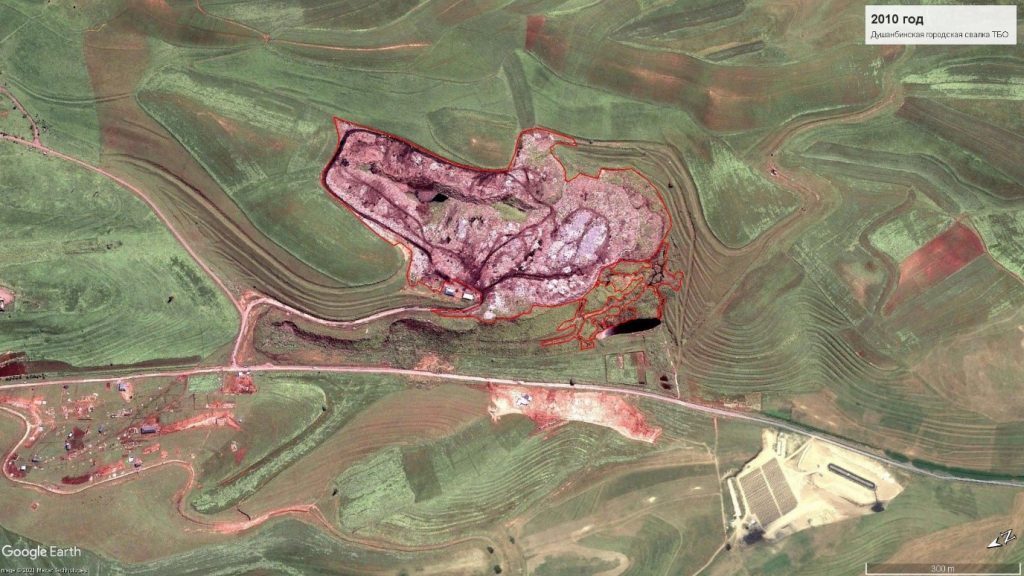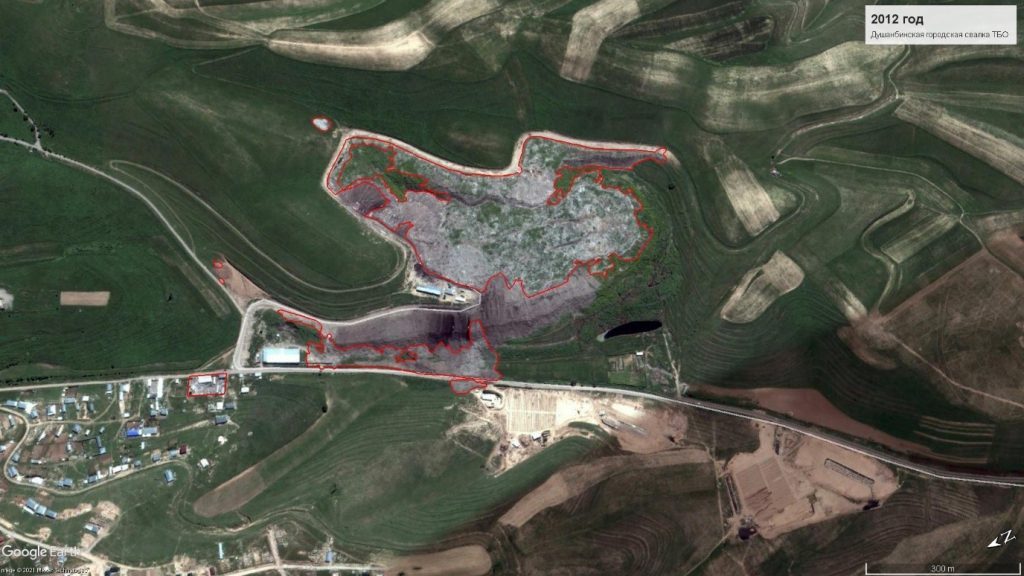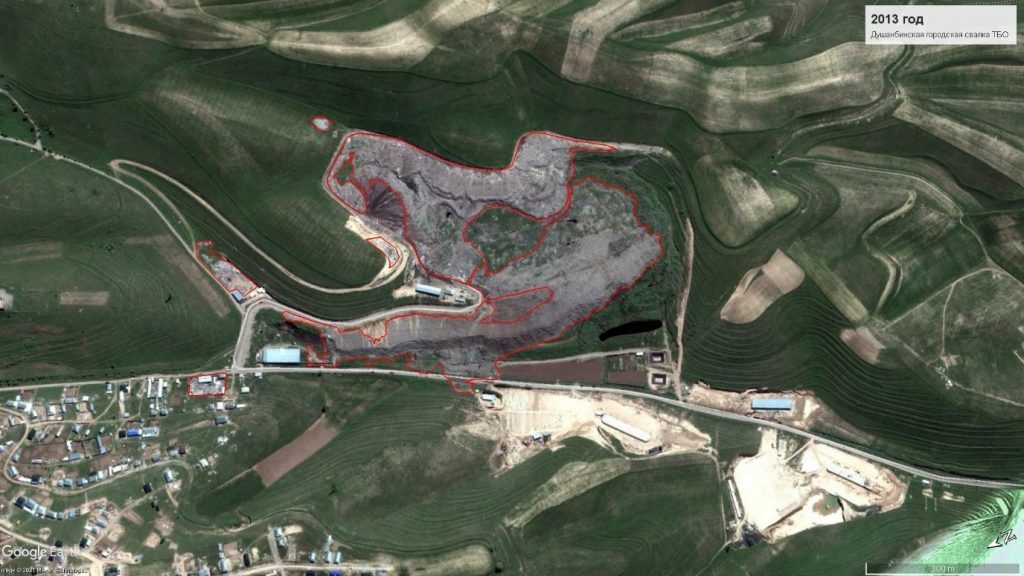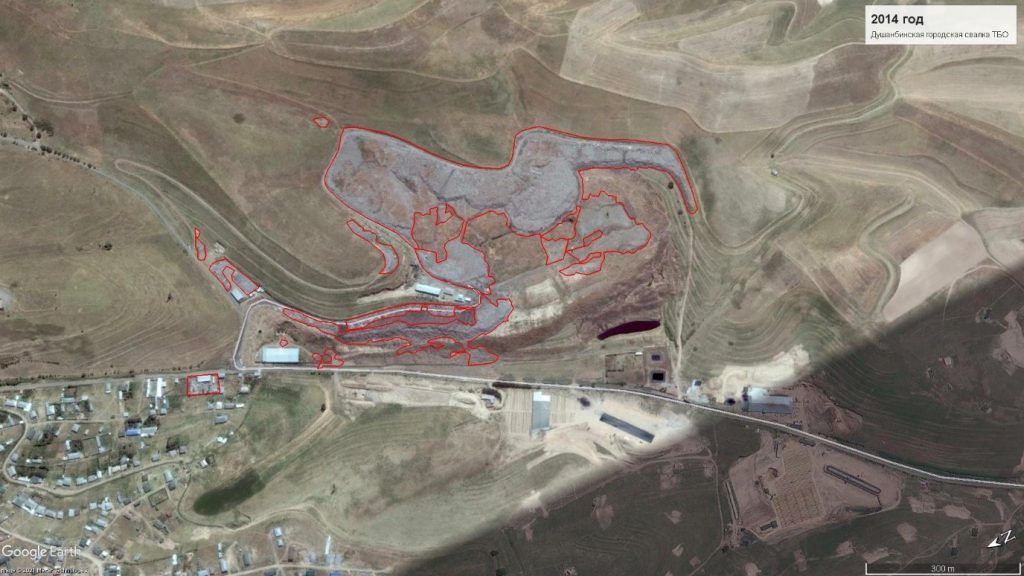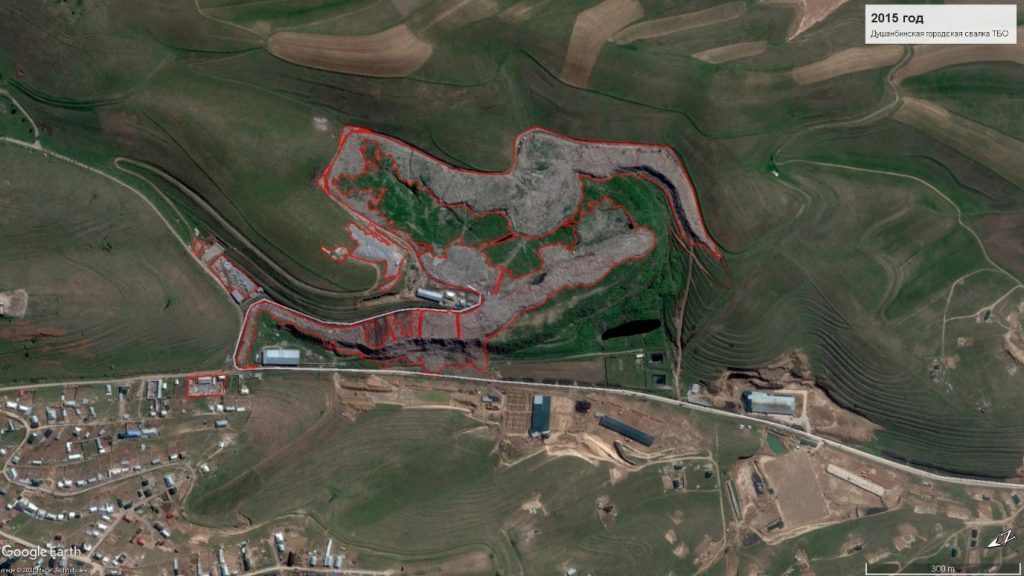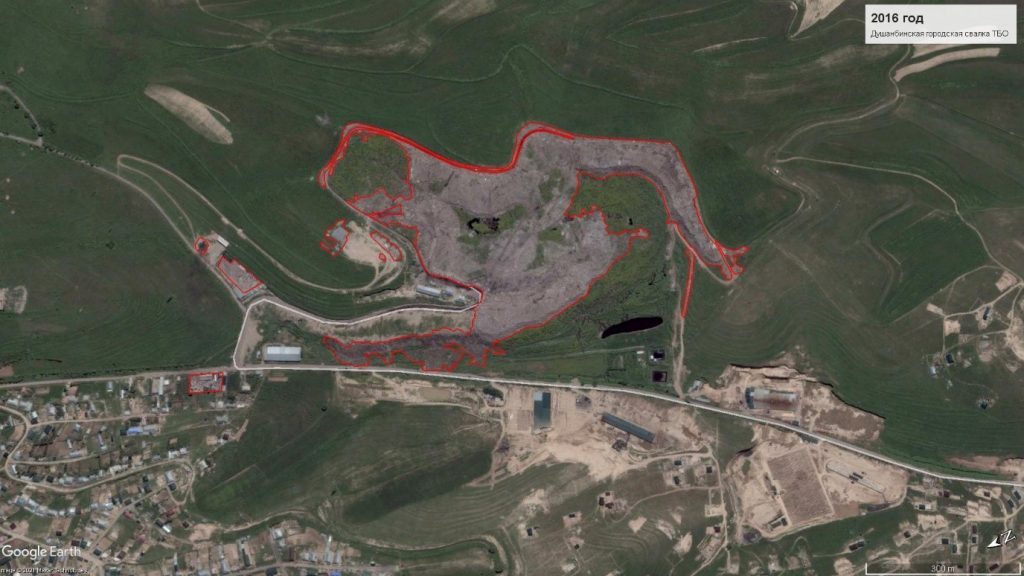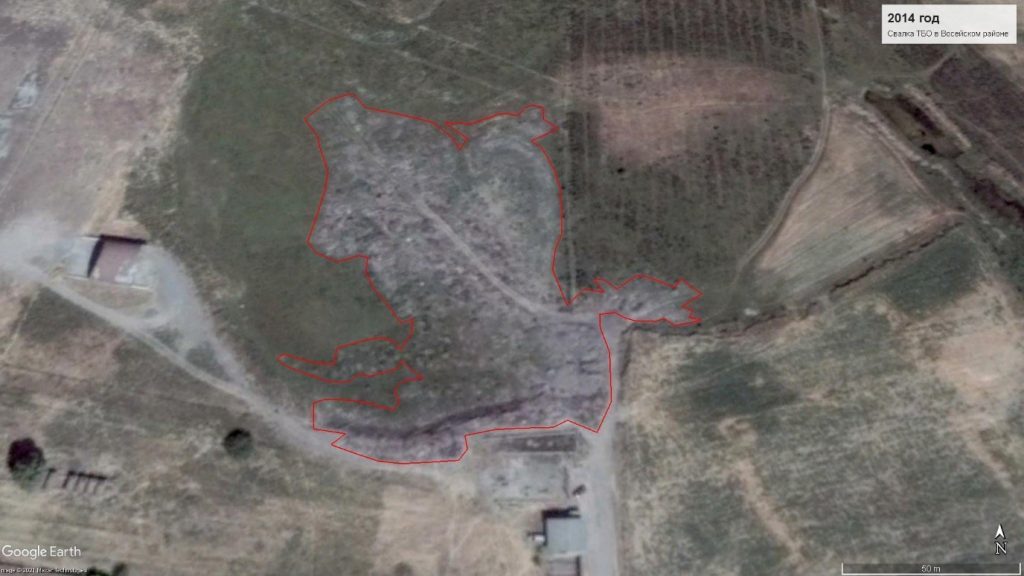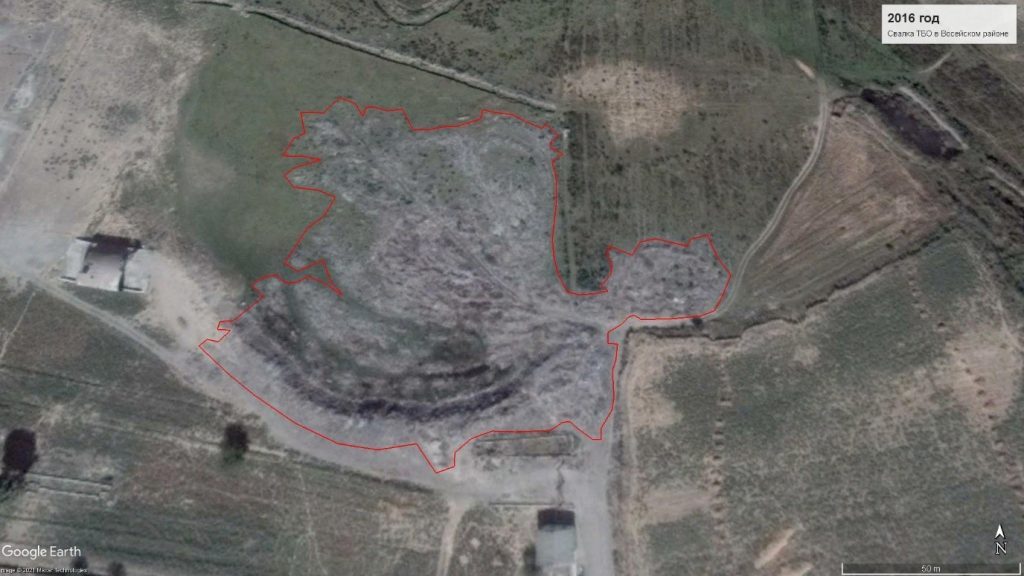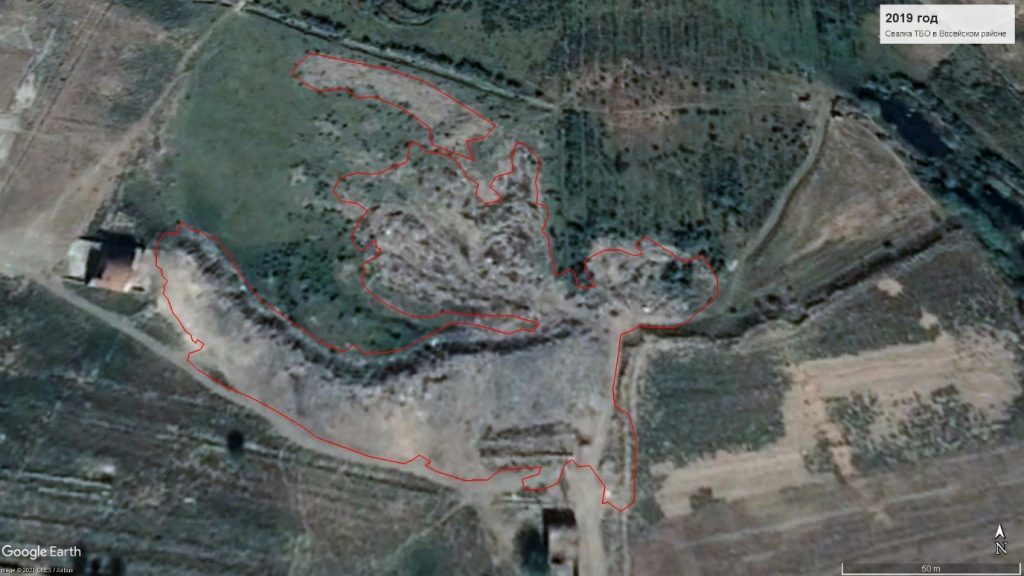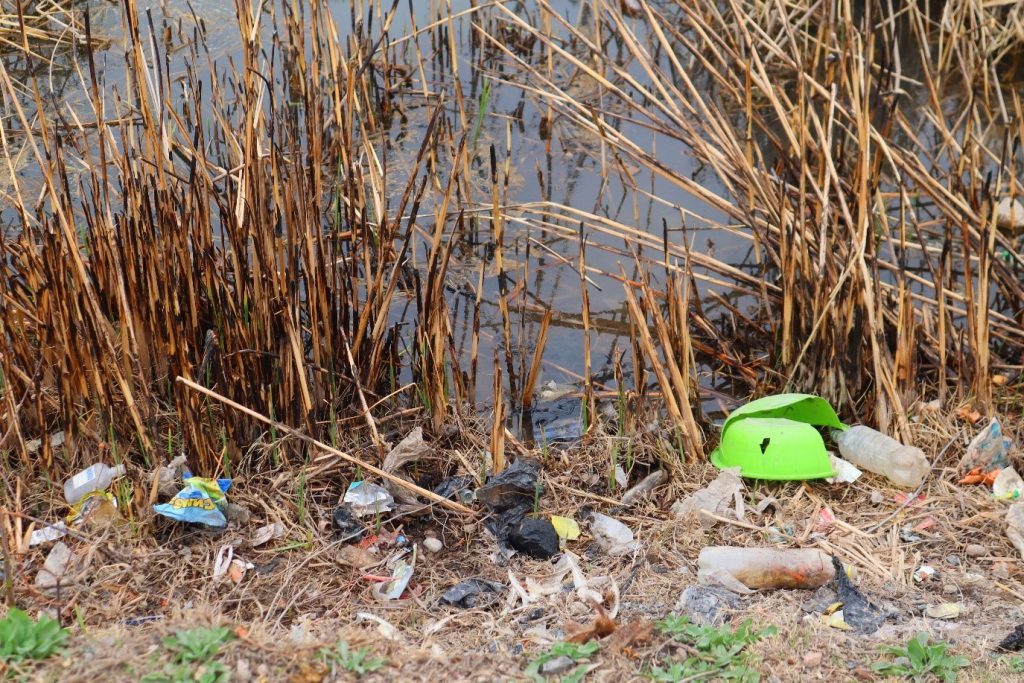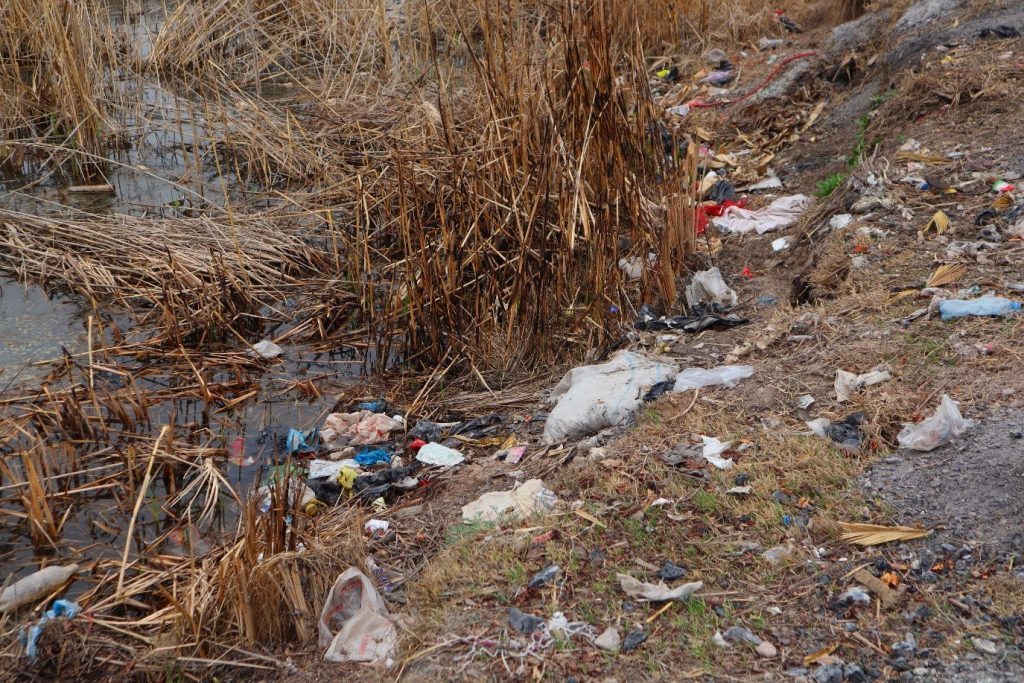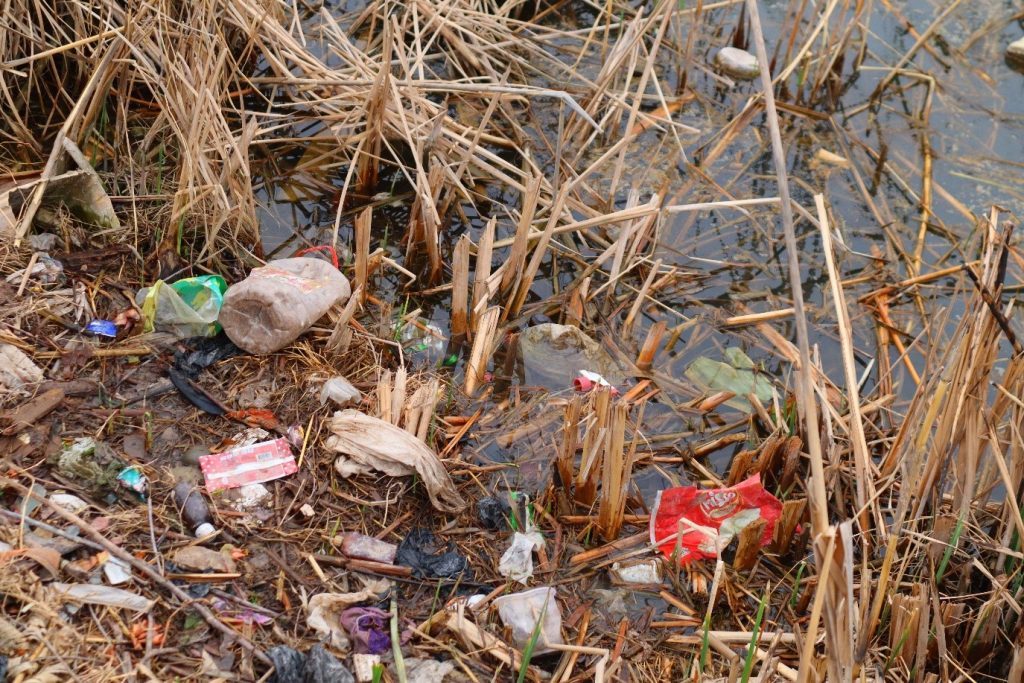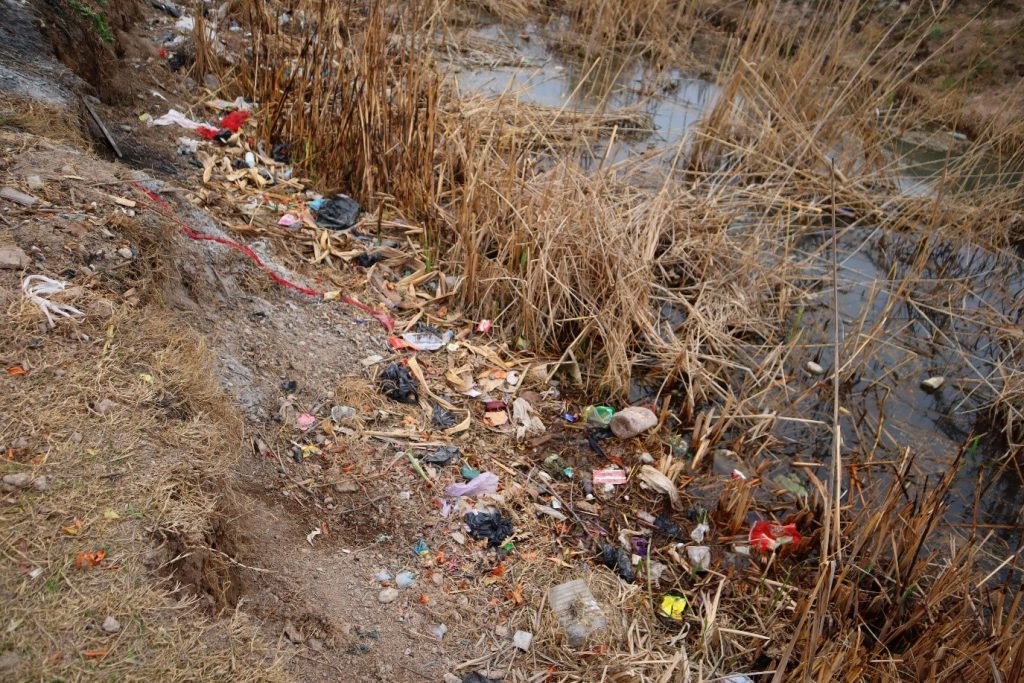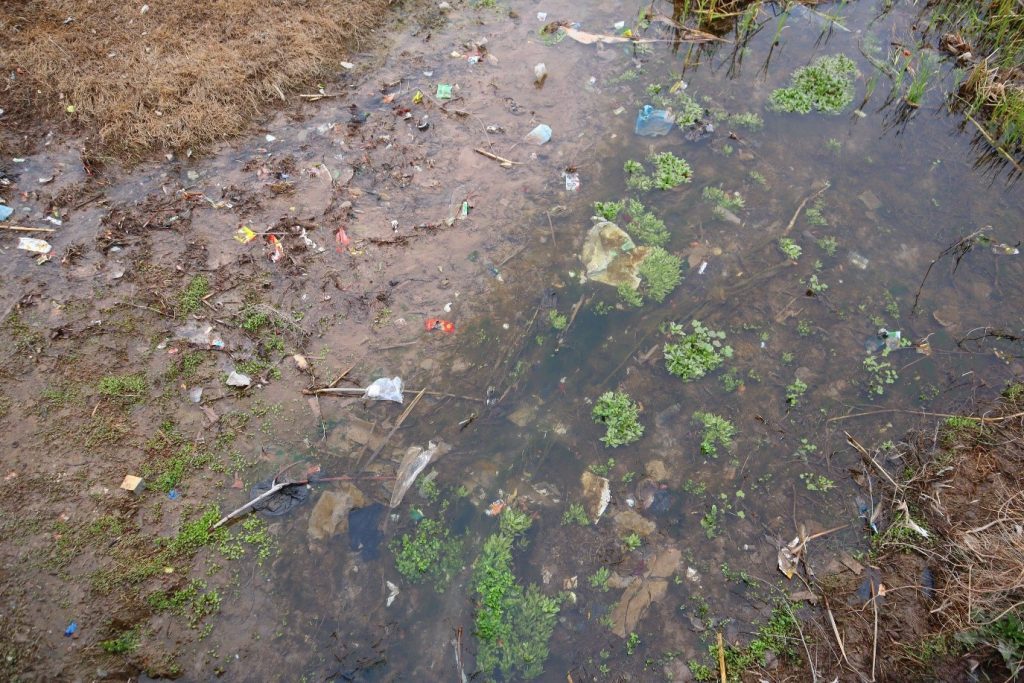The participant of CABAR.asia School of Analytics Navruz Karimov conducted research on the issue of containment and recycling of waste in Tajikistan. More details are in the following article.
Follow us on LinkedIn!

Both the government and citizens are relentlessly ignoring the waste problem in Tajikistan. Meanwhile, landfills in Tajikistan are growing; household waste accumulates along highways and turns into open dumps. Recycling plants are not enough, some of them operate illegally.
Only NGOs and eco-activists who promote the idea of reducing consumption and recycling of waste raise the issue of environmental pollution. New recycling plants will create new jobs, and garbage can be used as secondary raw materials for sustainable production. Reuse of waste will reduce the size of landfills and curb the harm they cause to the environment and people living in their vicinity.[1]
Landfills are expanding
There are about 70 large landfills in Tajikistan.[2] Due to the fact that the government does not have money for recycling, the garbage usually gets tramped and covered with sand, thus forming a “layer-cake” of garbage and sand. For example, about 700-800 tons of litter are brought to the “Landfill of municipal solid waste of Dushanbe” every day and this figure is increasing every year.[3] Because there is no common practice of separate waste collection in Dushanbe, and generally in Tajikistan, it is impossible to sort out recyclable waste on the territory of landfills.
On the satellite photos below, the red line indicates the area occupied by the garbage dumps. As you can see, a certain part of the territories occupied by waste decreases periodically, but in fact, the garbage in the landfill does not decrease; it is just buried and conserved underground.
Buried waste becomes unusable. For years, it rots and secrete leachate – a poisonous liquid that gets into groundwater, and therefore into the drinkable water drainage system. The Committee for Environmental Protection (CEP) in Dushanbe claims that the leachate at the Dushanbe landfill is pumped out and then settled in 2 pools before being dumped into the sewerage.
Even if we assume that the drainage system in the city landfill of Dushanbe is working properly, we can feel certain about other landfills in Tajikistan. For example, on satellite photographs of the landfill in Vose district pools for leachate settling are not visible, although the landfill area is small, and is not more than 7 years old.
Landfills also generate landfill gas, which negatively affects people living nearby.[4] Landfill gas contributes a minimum of 25 times more to global warming than CO2 emissions[5] and is easily flammable, which is fires occur so often on landfills. The smoke from burning waste not only has an unpleasant scent but also poses a danger to people and animals located within a radius of several kilometers from the site of the fire.
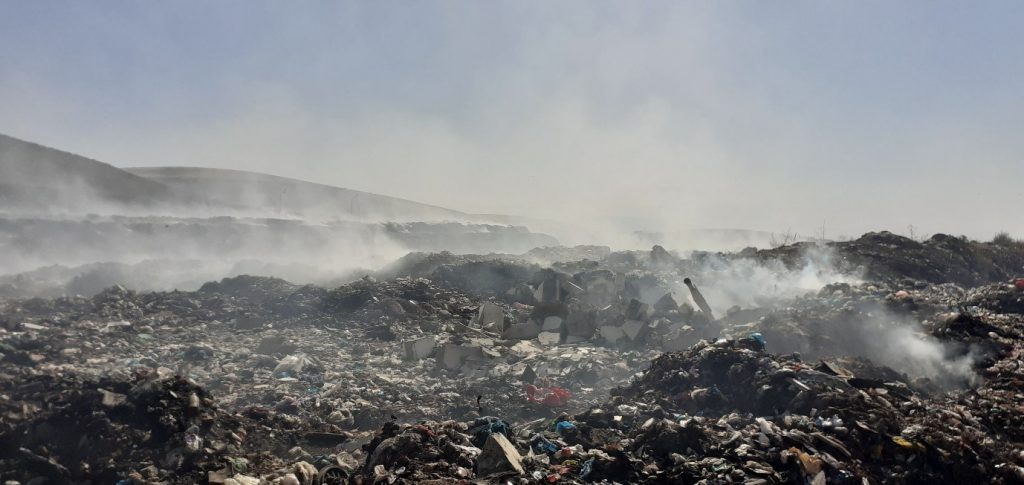
Garbage should be burned only in special thermal treatment plants, which do not allow such harmful substances as dioxins and furans to be released into the atmosphere. The fact is that they enter the bloodstream through the respiratory tracts and settle on the adipose tissues of humans and animals. A high concentration of dioxins in the human body negatively affects the functioning of the liver, immune and nervous systems. Animals that are constantly exposed to dioxins can develop some types of cancer.[6] Once in adipose tissue, dioxins and furans will never be removed from the body and harm the organism within a lifetime.
The satellite photo shows that waste is also deliberately burned, and smoke from the fire is carried by the wind to local homes.

To protect people from the negative impact of toxic waste, sanitary zones should be created around the landfills. The presence of people or animals should be prohibited in such zones.
Compare the area around the Dushanbe landfill in 2009 and 2021. The larger the territory of the landfill, the farther people should live from it, but in reality, the situation is completely different – the landfills are overgrown and houses are being built closer and closer to the landfills, usually at a distance of fewer than 700 meters. This testifies to the fact that the issue of safe waste management is not a priority for citizens themselves. The growth of the urban population may be leaving no choice to new, less affluent settlers from choosing housing in greener neighborhoods.
Living nearby the dumps
Not far from housing settlements, along the roads, on the banks of rivers and lakes throughout Tajikistan, illegal dumps are formed that pollute the environment. According to the Law on “Production and Consumption Waste”, local government bodies are empowered to identify and eliminate unauthorized waste dumps, inform the population about waste management, and economically encourage people to manage waste sustainably.[7]
Local self-government bodies do not take these measures, or they carry them for the sake of formality. An example is the village of Bolshevik in the Kushanian district (Bokhtar city). According to eyewitnesses, 2 years ago there was no open dump here.
Photos: Umed RahimovToday, unauthorized landfills have become rather common in Tajikistan. Eco-activists are alarming about the extreme level of environmental pollution. In a recently published long read on CABAR.asia, the authors found out that near the largest market in Gorno-Badakhshan Autonomous Province the landfill has been formed, it attracts rats and exudes a strong unpleasant smell in summer.[8]
Residents of Khorog also throw waste directly into the Gund river. Despite the fact that eco-activists and employees of the “Housing and Communal Services” periodically clean out the landfills and river banks, the waste won’t decrease.
In lower-middle-income countries, including Tajikistan, 66% of waste is thrown in open, illegal dumps[9] and eventually end up in rivers and lakes. 12% of this litter contains plastic, which decomposes into small particles and consumed by fish. In winter, polyethylene crumbles into pieces and gets in groundwaters, which carries the plastic to the nearest water station. Via food and drinking water, microplastic get into the human body and causes inflammatory processes in the gastrointestinal system.[10]
Natalya Idrisova, eco-activist and project coordinator of the environmental NGO “Malenkaya Zemlya” believes that the way out of the imminent ecological crisis caused by the excessive amount of waste is not only recycling but first of all, reduction of consumption:
“Even if we sort out the waste in the shortest possible time and learn how to recycle it correctly, by the example of other successful countries, which seems like a dream in the near future, we need to minimize the amount of waste! We should have been talking about this 50 years ago! Today, many countries cannot cope with the accumulated volumes of waste at all. We began to consume in huge amounts – we use the product once and immediately throw it away. Nobody cares what happens to this garbage later. But we live on a planet where everything is interconnected, therefore, one way or another, we return natural resources to the environment, but in the form of unnecessary things, equipment, packaging, i.e., waste that pollutes the environment, and can only be recycled in limited quantities”.
Who is processing waste in Tajikistan?
Private plastic processing plants operate on the territory of the Dushanbe landfill. It’s unknown what amount of plastic they recycle per day. There is a rumor that a private Arab company is interesting in Dushanbe waste and plans to build its own solid waste processing plant.
Waste recycling is an expensive business. The construction of a complex for processing 100,000-200,000 tons of solid waste per year can cost 10-16 million dollars. Small and medium-sized businesses do not have that many resources, so the amount of waste recycled by local factories is insufficient.
The second obstacle to reducing environmental pollution is the lack of waste sorting. The authorities do not carry out educational programs on explaining the importance of proper utilization of garbage. Housing and communal services do not provide the population with the necessary garbage containers, let alone schools where such issues are not covered; there are no accountability mechanisms for pollution and failing to sort the garbage.
When people throw paper, plastic, and food waste into one container, by the time the truck arrives at the landfill, 97% of the waste in this mass becomes impossible to recycle. Instead, homeless people sort (most often) plastic and aluminum and bring them to recycling plants.
Most mercury-containing waste is not recycled in any way due to the fact that people throw batteries, thermometers and light bulbs in the same trash bin with other waste. Secondly, there are no specialists in demercurization – the process of removing mercury from the waste to avoid poisoning of the earth and living organisms.
The CEP reports that a demercurization unit was installed at the Dushanbe landfill several years ago, but it was never used, and now it is out of order for certain (not specified) reasons. Small businesses filled the gaps, providing services of collection, processing of solid waste, and disposal of hazardous waste in Tajikistan.
For example, one of such entrepreneurs, Akhror Rakhimov, collects mercury-containing waste. People from cities and districts collect and send used energy-saving light bulbs and other electronic waste to him. Submitting one light bulb costs 0.70 somoni, but the entrepreneur is ready to provide discounts to cultural and educational institutions.
Medical waste management
Special attention should be given to the disposal of medical waste, which is the source of infectious diseases. Medical waste refers to pharmaceutical products, syringes, gloves, bandages, remains of human and animal tissues, amputated limbs, etc.
The non-profit organization “Peshsaf” and UNDP within the framework of the project “Addressing COVID-19 Environmental hazards through improving medical waste management project”, investigated 15 republican hospitals and 4 large laboratories in Dushanbe for proper disposal of medical waste.[11] It was found that 6 out of 15 hospital incinerators do not have a sufficient temperature to completely neutralize medical waste. Umedjon Ulugov, a consultant to the “Peshsaf” organization, believes that despite the existing problems with hazardous waste disposal, the situation in Tajikistan is not critical:
“The Ministry of Health is ready to manage medical waste, for example, it supplies medical facilities with bags for collecting infectious waste, boxes for collecting sharps. One of the biggest difficulties for the Ministry of Health is that there is simply no separate budget for medical waste, this item is indirectly reflected in the payment of utility costs. There is more suggestion here for the country’s Ministry of Finance on dividing budget lines in detail to help health authorities plan waste disposal costs.
Of course, there is also a need to train medical personnel in medical waste management, especially in times of pandemics. I would also like to note that most of the country’s hospitals have equipment for incinerating waste, but the noticeable growth of settlements leads to a convergence of the boundaries of the location of medical institutions. I would suggest burning waste only on the territory of specialized landfills, but for this, as I said earlier, it is necessary to resolve issues with budget planning and the allocation of a separate article for waste management”.

We spoke with the owner of one of the private dental clinics in Dushanbe and she confirmed that the Sanitary Epidemiological Station provides boxes and bags for medical waste, but not free of charge. Also, clinics are obliged to conclude an agreement on the monthly disposal of medical waste, the cost of the service is 350 somoni per year.
Medical facilities collect waste and transport it to landfills. Despite the fact that the only way of medical waste disposal is incineration, we found out that at the Dushanbe municipal solid waste landfill, for example, needles from syringes are not burned, but soaked in bleach and placed in boxes that are covered with alabaster so that no one could accidentally contact with them. The boxes are then thrown into the same heap as the solid waste.
The landfill administration resorts to such measures, because their furnace also does not have the necessary temperature for the incineration of medical waste. In this regard, it is unclear how Tajikistan is going to dispose of disposable injection devices after vaccination with vaccine from AstraZeneca?[12]
Very little attention is given to the utilization of medical waste that is created by households. For example, the needles from syringes get to the landfill with the rest of the garbage, not being previously separated in special boxes and bags, so they will not be swabbed with bleach and can infect people who work in the landfill.
How things are supposed to be?
The population of Tajikistan is growing by an average of 2% annually, poverty is decreasing by 2.8% annually, which means that consumption and waste generated by households are also growing. To control the negative impact of waste on the environment, at least a dozen legislative acts were issued. They either expressly or by implication are related to the issues of waste management in Tajikistan.
The Law of the Republic of Tajikistan “On Production and Consumption Wastes” (2002) stands out among others, it obliges landfill owners to choose the place of waste disposal properly and periodically monitor their disposal sites. Local governments must separately collect and remove waste regularly.
Hazardous waste should be subdivided into classes according to the degree of its impact and placed only in specially equipped facilities. According to the Law of the Republic of Tajikistan “On Environmental Monitoring” (2011), when handling hazardous waste, monitoring of negative affect on the environment should be carried out.
The need for sanitary-epidemiological and radiation control of places of temporary storage and disposal of waste is written in the Law of the Republic of Tajikistan “On ensuring the sanitary-epidemiological safety of the population” (2003).
At its day, the resolution “On measures to create a system for the safe collection, storage, transportation and processing of mercury-containing lamps” (2009) was signed. According to this document, the executive authorities, as well as local self-government bodies and the State Unitary Enterprise “Housing and Communal Services” must organize points for collecting used mercury-containing light bulbs, as well as inform the population about the procedure for collecting them. For all these activities funds have been allocated from city budgets.
But in reality, the situation is completely different. The monitoring of the negative impact of the buried waste on the environment is either not carried out at all, or the monitoring data are not taken into account by the landfill managers: the serviceable life of the landfills is expiring, and the garbage continues to accumulate in them, housing starts are growing within a radius of several hundred meters.
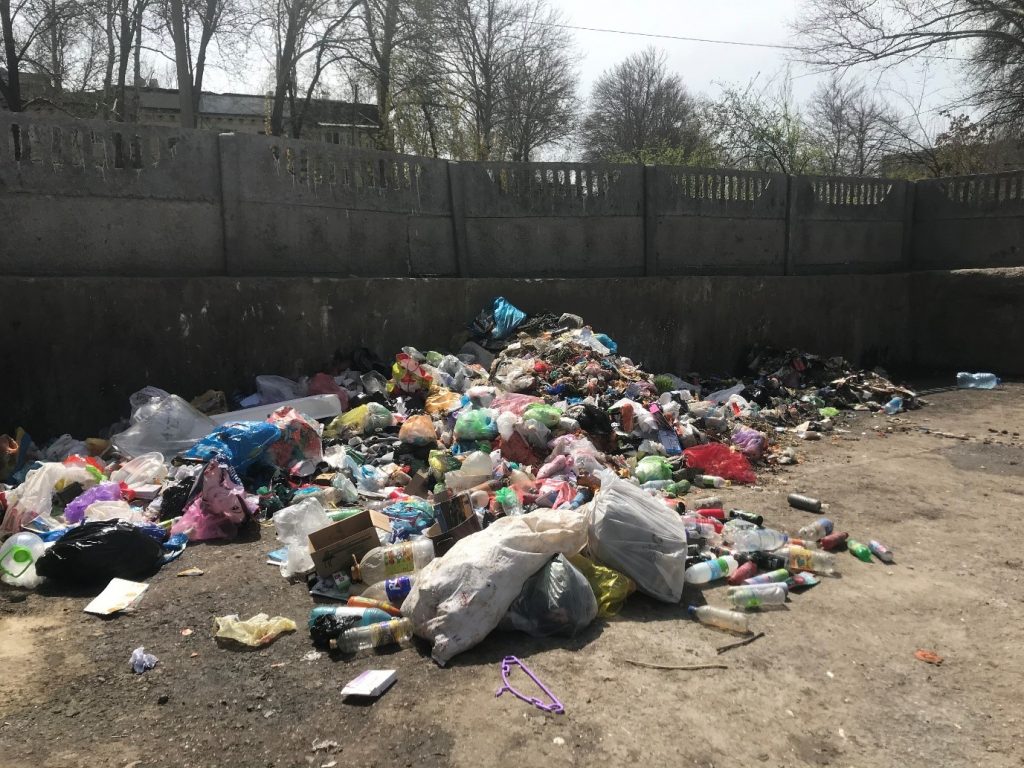
In each locality, at the places of temporary storage of garbage, cans for separate collection of waste should be located. But in reality, you can often see that there are no trash cans and the garbage is thrown directly onto the ground.
As for hazardous waste, most of it is not properly disposed of due to a lack of equipment and specialists. Since it is difficult for the government to allocate money to finance environmental projects and train new specialists, it is necessary to create and implement a policy to reduce the use of single-use goods and separate the collection of solid and hazardous waste.
In 2009, the government proved its ability to create effective campaigns: through the media and officials in government agencies, the population was persistently asked to switch to energy-saving lamps.[13] The issue of saving electricity is part of Emomali Rahmon’s policy, which is aimed at achieving full energy independence in Tajikistan.
But if the government is also looking to maintain public health and ensure environmental safety, then it should heed the recommendations of environmental organizations and promote a lifestyle based on responsible consumption.
This article was prepared as part of the Giving Voice, Driving Change – from the Borderland to the Steppes Project implemented with the financial support of the Foreign Ministry of Norway. The opinions expressed in the article do not reflect the position of the editorial or donor.
[1] “Что делать с мусором в России?”, Greenpeace, https://greenpeace.ru/wp-content/uploads/2019/10/report-RUSSIA-GARBAGE.pdf
[2] “Мусорные горы”, Tilav Rasul-Zade, 04.09.19, Fergana news agency, https://fergana.agency/articles/110375/
[3] «Обращение с отходами в городе Душанбе», 22.05.2020, The Committee for Environmental protection under the Government of the Republic of Tajikistan, http://tajnature.tj/?p=11251
[4] “Оценка воздействия свалочного газа с полигонов твердых бытовых отходов на человека”, Balakhchina Taira Kaadyr-Oolovna, Научный диалог, no. 2, 2012, pp. 41-57. https://cyberleninka.ru/article/n/otsenka-vozdeystviya-svalochnogo-gaza-s-poligonov-tverdyh-bytovyh-othodov-na-cheloveka
[5] “Global Methane Emissions and Mitigation Opportunities”, Global Methane Initiative, https://www.globalmethane.org/documents/gmi-mitigation-factsheet.pdf
[6] “Dioxins and their effects on human health”, World Health Organization, 04.10.2016, https://www.who.int/news-room/fact-sheets/detail/dioxins-and-their-effects-on-human-health
[7] “Закон Республики Таджикистан “Об отходах производства и потребления”, в редакции Закона РТ от 25.07.2005г. № 109, от 28.06.2011г. № 736, https://tajtrade.tj/media/44.pdf
[8] “Загрязнение окружающей среды на Памире беспокоит жителей региона”, Iftikhor Mirshakar, Khushbakht Zaydullo, 17.03.2021, CABAR.asia, https://longreads.cabar.asia/pamirecology
[9] “What a Waste 2.0: A Global Snapshot of Solid Waste Management to 2050. Urban Development”, Kaza, Silpa; Yao, Lisa C.; Bhada-Tata, Perinaz; Van Woerden, Frank, 2018. Washington, DC: World Bank. https://openknowledge.worldbank.org/handle/10986/30317 License: CC BY 3.0 IGO.
[10] “В организме человека впервые обнаружили частицы пластика”, Ksenia Safronova, 23.10.2018, Deutsche Welle, https://bit.ly/3cCfju7
[11] “UNDP and Ministry of Health Present Assessment Results on Medical Waste Management in Tajikistan”, United Nations Development Program, 02.03.2021, https://www.tj.undp.org/content/tajikistan/en/home/presscenter/pressreleases/2021/03/undp-and-ministry-of-health-present-assessment-results-on-medica.html
[12] «В Таджикистан прибыла вакцина AstraZeneca. Кто будет привит первым?», Mullorajab Yusufzoda, 09.03.2021, Radio Ozodi, https://rus.ozodi.org/a/31140853.html
[13] «Лампочка Рахмона, или Светлое будущее Таджикистана», Khairullo Mirsaidov, 16.10.2009, Deutsche Welle, https://p.dw.com/p/K86O


